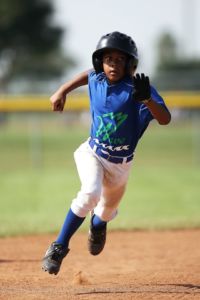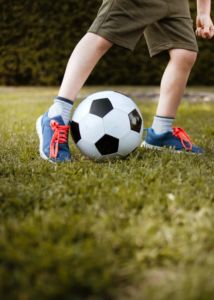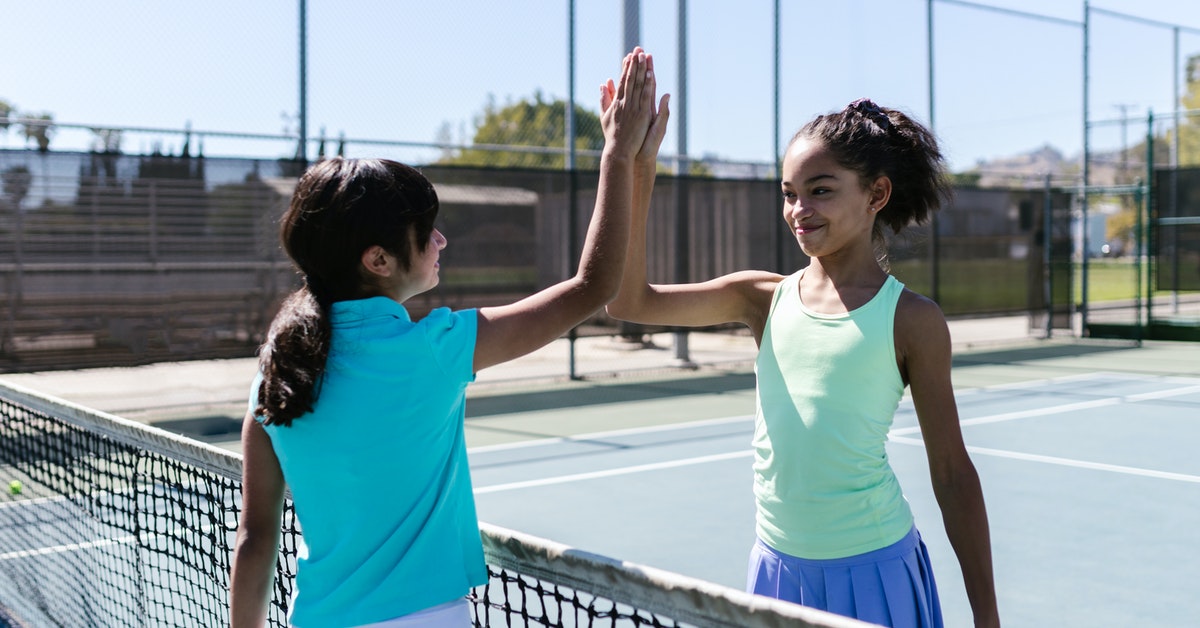Young athletes reap many benefits from playing the sports they love. They can learn teamwork, make new friends and stay physically fit. But kids’ bodies are still developing, putting them at a higher risk for certain sports-related injuries.
Here are five ways to ensure your kids have a fun and safe experience with summer sports.

1. Screen for Underlying Conditions
Kids with conditions like asthma, congenital heart problems, and diabetes may not be able to participate in sports or may need to take certain precautions. Sometimes these problems go undetected. Ensure your child gets a thorough physical exam from their pediatrician before enrolling them in athletics.
If your child has asthma, diabetes, or another condition, talk to their doctor about how they should use their medication while being active and what warning signs their coach should be aware of. It can be helpful for kids with diabetes, for instance, if their coach knows they need to eat a snack halfway through practice.
Your child may need encouragement to feel comfortable telling their coach if they don’t feel well during a practice or game. With medical guidance and parental support, most kids can be active safely.

2. Help Them Stay Hydrated
It’s hot out there! If you feel like you are roasting on the sidelines during your child’s T-ball game, imagine what they feel like. Ensure your child’s coach gives the team plenty of breaks to drink water. The American Academy of Pediatrics recommends that kids take a water break every 20 minutes when active in warm weather. If temperatures are expected to exceed 90 degrees Fahrenheit, or it’s humid and hot, it’s best to hold the game or practice during the morning or evening, not in the heat of the day.
Talk to your child about the importance of staying hydrated and send a water bottle with them to every practice and game. If your child is active for an hour or more on a hot day, consider giving them a sports drink designed for kids like Pedialyte.
Everyone should know how to spot the signs of heat exhaustion and heat stroke in themselves and others. Signs of heat exhaustion include weakness, exhaustion, nausea or vomiting, fainting, irritability, and cool, clammy skin. If a child exhibits any of these symptoms, they should be immediately moved to a cool indoor location and given cool liquids to drink. You can also wet a rag with cool water and place it on the back of their neck. When caught and treated quickly, heat exhaustion can be prevented from turning into heat stroke.
Heat stroke is a life-threatening emergency. A child (or adult) exhibiting the following symptoms should be taken to the nearest emergency room immediately:
- severe headache
- weakness, dizziness
- confusion
- fast breathing and heartbeat
- loss of consciousness (passing out)
- seizures
- little or no sweating
- flushed, hot, dry skin
- body temperature rises to 105°F (40.5°C) or higher
Staying hydrated, wearing light-colored clothing, and avoiding activity during the day’s hottest hours can prevent heat-related illness and emergencies. Let your child know they should take a break and cool off if they feel too hot while playing sports.

3. Get the Right Gear
Every sport requires different gear for safety and gameplay. If your child plays contact sports, ensure they have the proper padding, helmets, and other safety equipment. Kids who need glasses should have shatterproof lenses to protect their eyes. Show your child how to wear their equipment correctly. Knee pads can prevent injury in some non-contact sports as well. It’s easier to slide into home or protect your goal when you aren’t scraping up your knees.
The occasional scrape or bruise isn’t concerning, but protecting your child’s head and growing bones is vital. The right equipment can help with this, but other practices are essential too.

4. Talk to Your Child About Safe Ways to Play
Sports are, above all, supposed to be fun, and every coach should do all they can to minimize risks to their players. Before you enroll your child talk to the coach and see if they teach the kids about safe ways to play and prohibited moves. Sliding head first into a base, for instance, shouldn’t be allowed.
In contact sports, children should be taught the right types of grips, and kids who are purposely playing rough or trying to hurt other players should have to sit out. Teaching kids to respect their fellow players and emphasizing proper form and adherence to the rules can prevent head injuries and other serious hazards.
Coaches should also know CPR and the signs of head injury. Sometimes injuries happen even when everyone does everything right, and coaches should have a plan to handle injuries.

5. Teach Kids About Fitness
Young athletes need to do many of the same things as adults. Warming up and stretching before a game or practice is just as important for kids. They also need to follow a training program to keep their muscles strong. Strong muscles are less prone to injury and help to protect growing bones. Talk to your child’s doctor and their coach about what type of training would be appropriate for your child.
Take the opportunity to teach your child about taking care of their body and valuing all their body can do. It’s best not to overemphasize weight loss or muscle bulking. Making fitness about health and self-care will help your child associate it with positive things and be more likely to stay fit and active as they get older. You can also talk to them about how exercise helps with stress and is an excellent coping habit.
Approach nutrition the same way. Tell kids that good nutrition keeps them healthy and gives them more energy. Avoid talking about dieting or weight loss. Following these tips can help kids stay fit and active and make them less likely to experience poor body image or eating disorders.
Chiropractic Care for Young Athletes in Tennessee
At Stanlick Chiropractic, we treat sports injuries in athletes of all ages. Regular chiropractic adjustments are proven to prevent injuries and increase athletic performance. Adjustments also support your child’s immune system and help them develop a healthy posture. Schedule a consultation today to find out how we can help your child have a safe and active summer.

